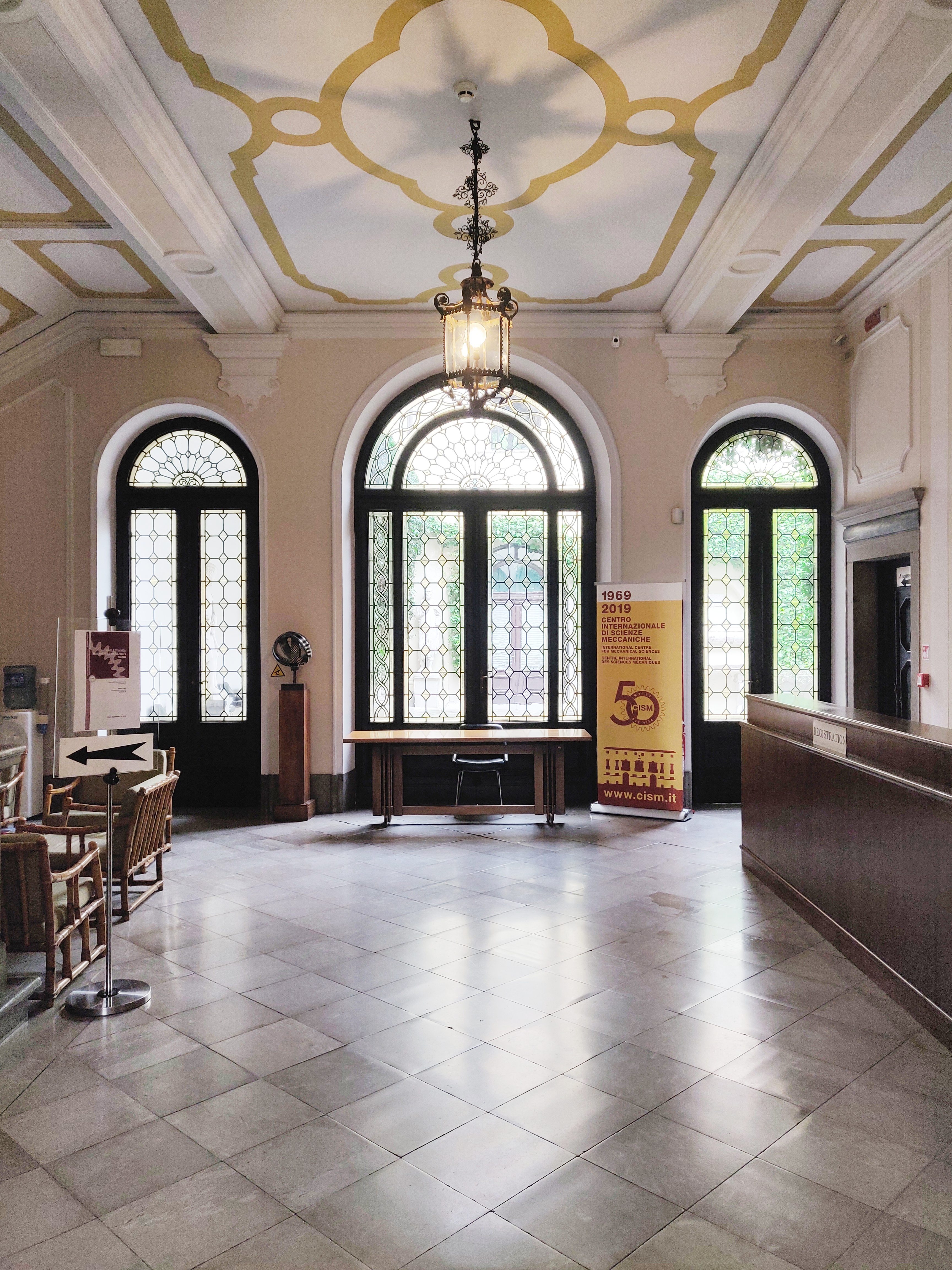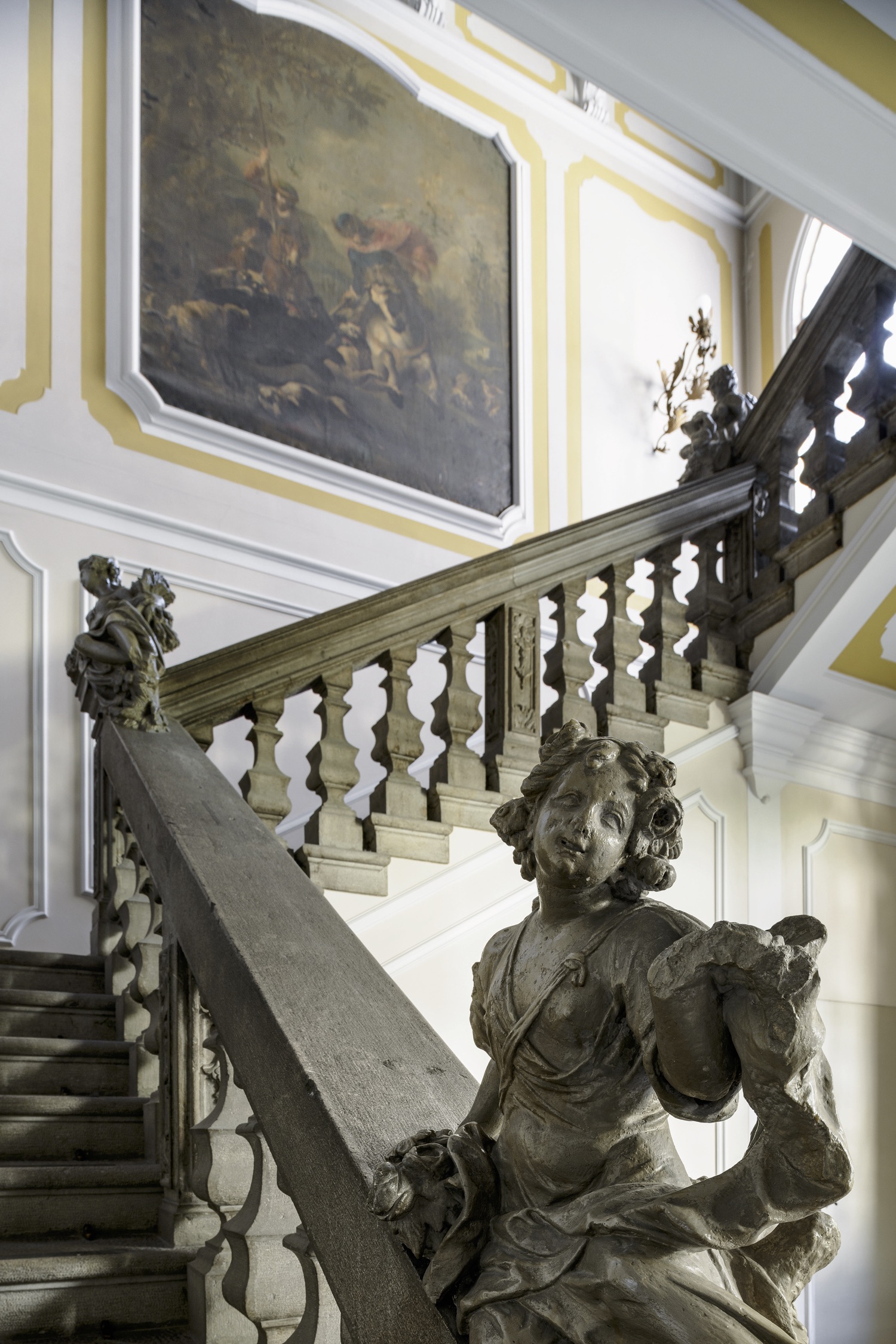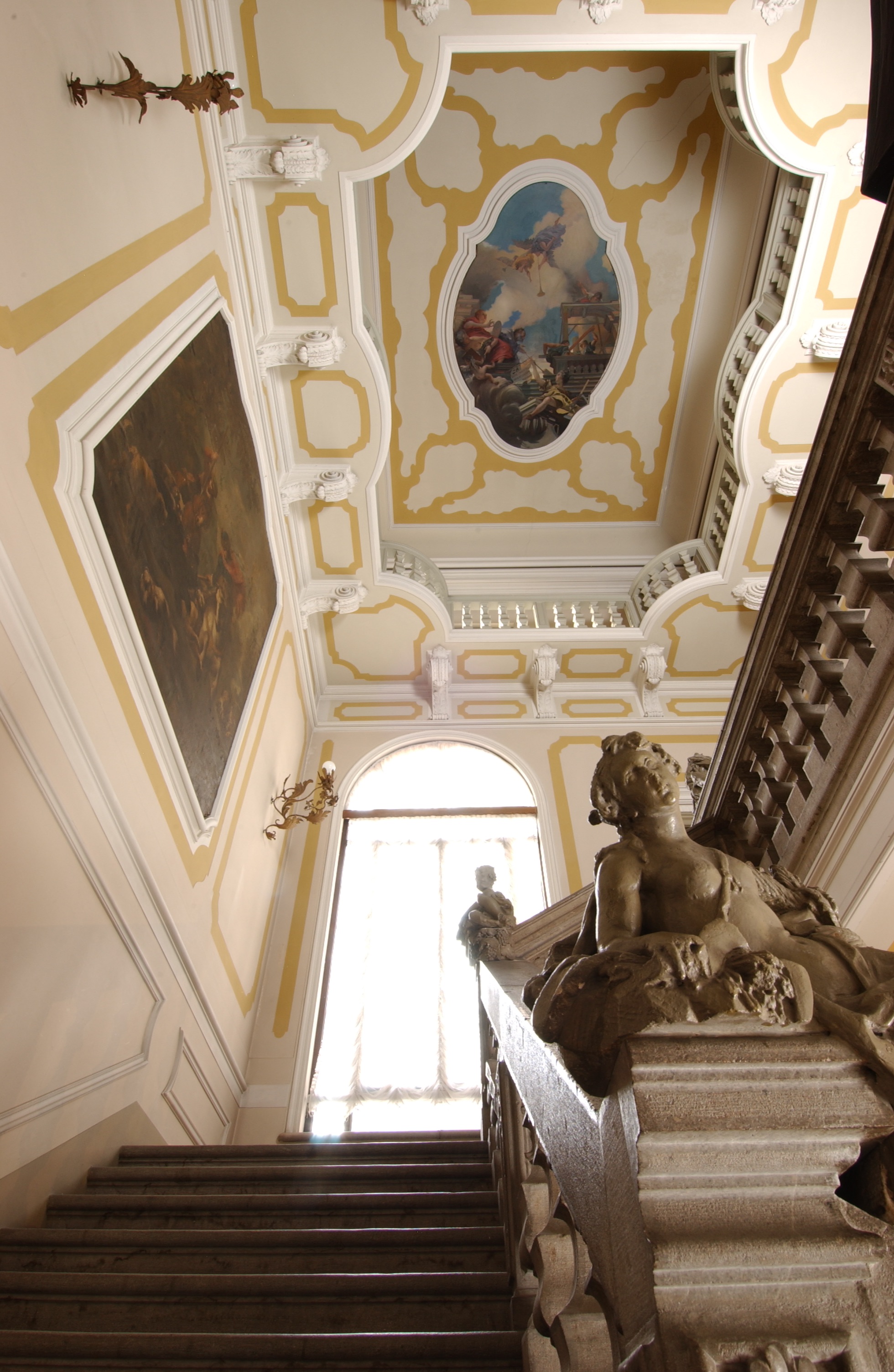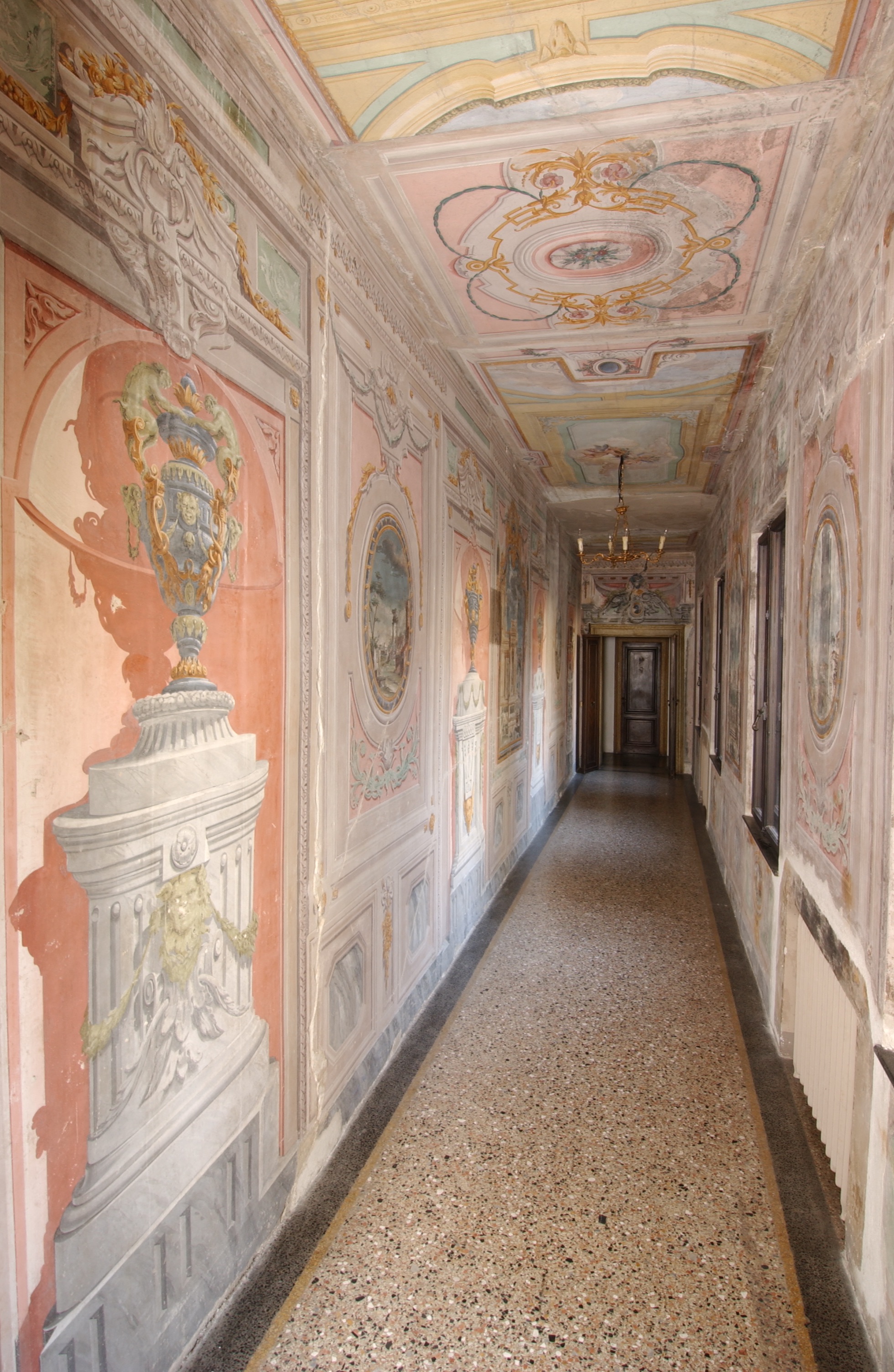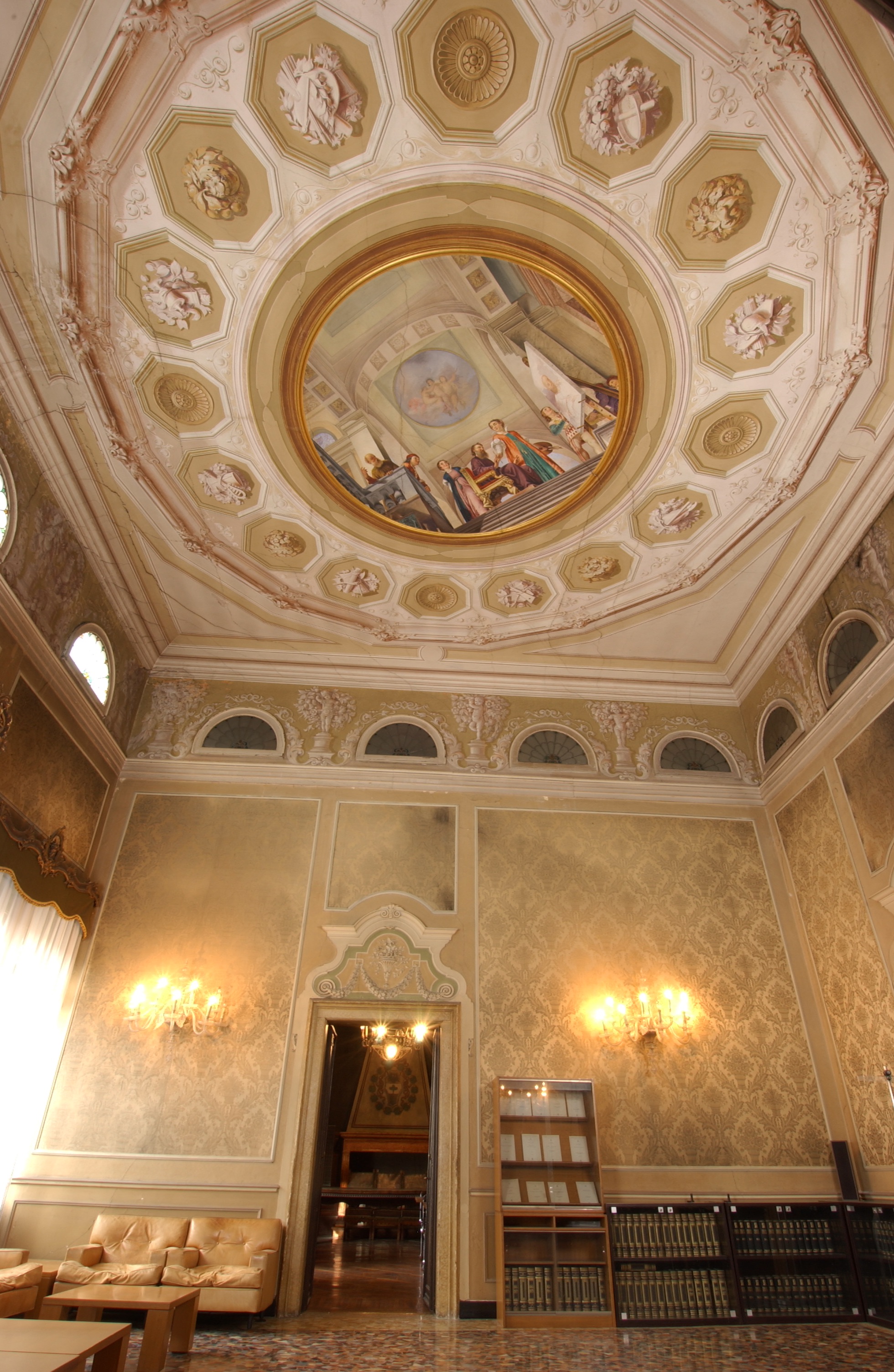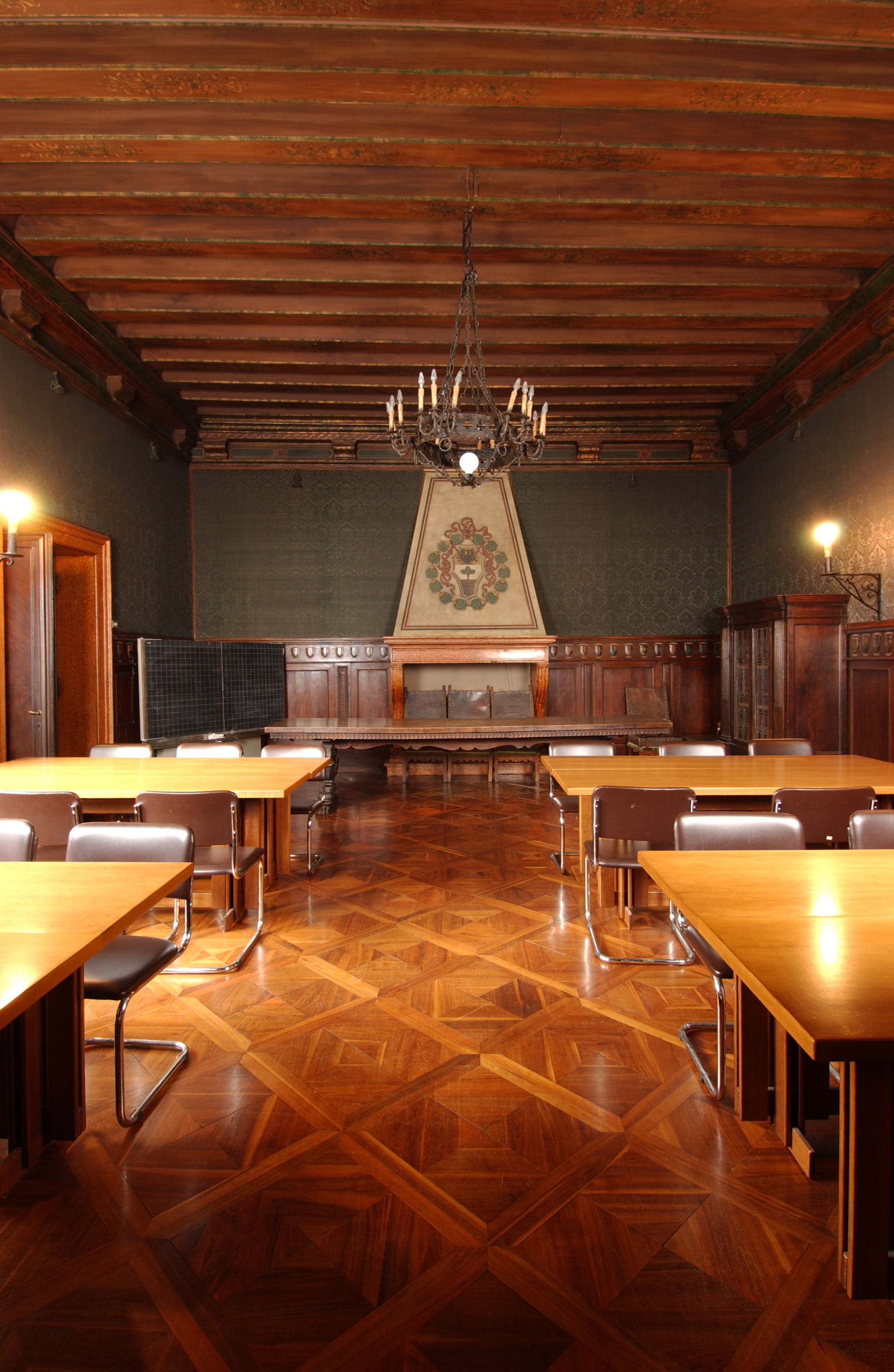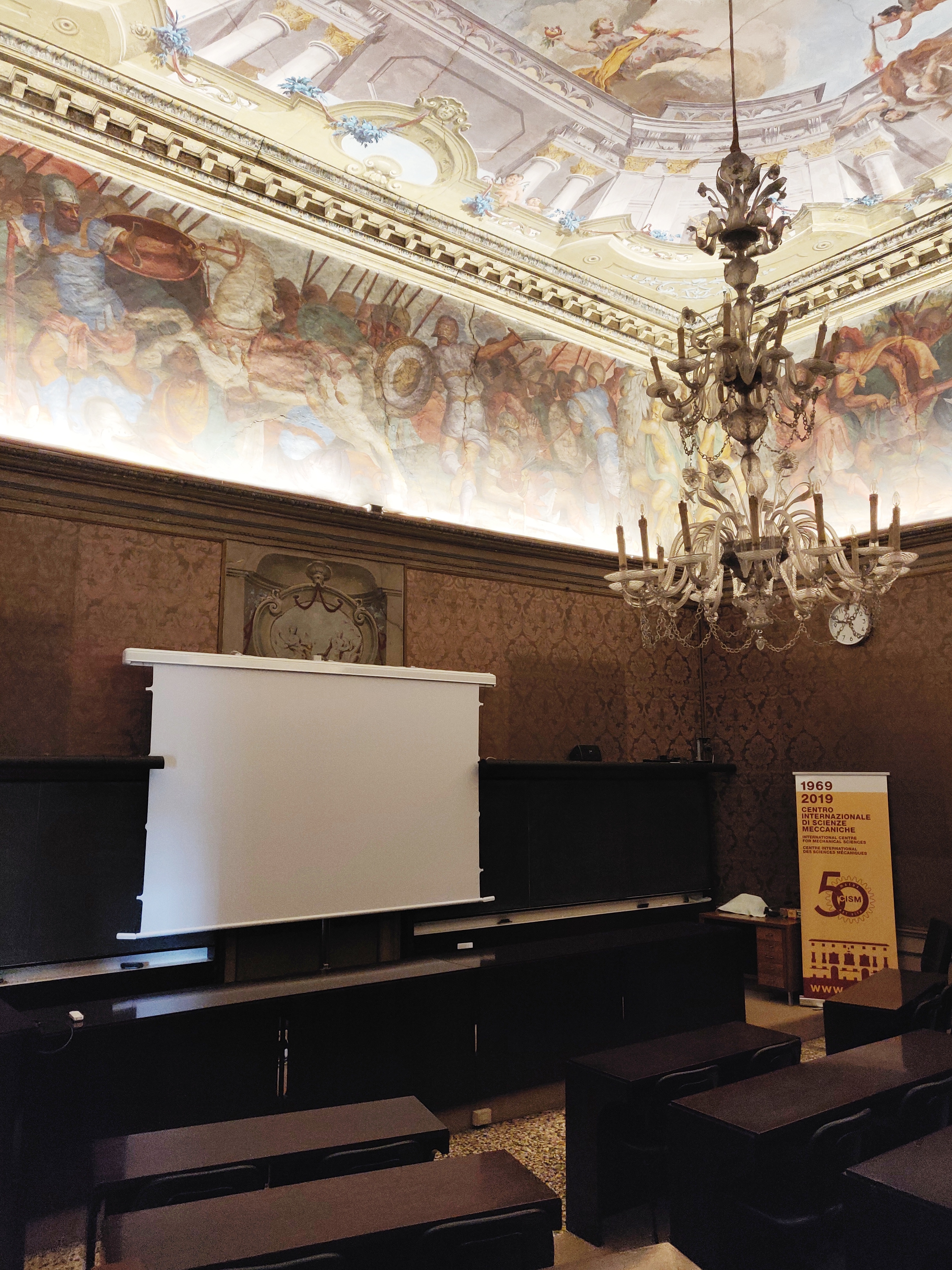Palazzo Antonini-Mangilli-del Torso is one of the most imposing and beautiful in Udine: the building goes back to 1577, as shown by the stone in the internal courtyard (commemorating also the name of the owner at that time).
It was finally completed, as far the facade is concerned, a little before 1680: Fabio della Forza wrote in that year: “Daniele [Antonini] built several houses in the Grazzano district, which have now grown to a double palace”.
In the facade, made pleasant to the eye by a play of light and dark, the harmony of the decorative parts and the balance of the structural parts, there are two entrance gates: a large one for coaches and a smaller one for pedestrians. There are pleasant windows with arched iron bars in the Venetian style on the ground floor, three mullioned windows with overhanging balconies on the first floor, and four windows with overhanging balconies that open onto the sides. The gable is connected to the lower level by means of baroque volutes. At the centre of the building, level with the third-floor windows, one can see the family’s coat of arms, partly hidden by the shadow of the widely overhanging eaves (in the traditional Friuli way).
The house has remained virtually unchanged in its facade since that time, as shown by a nineteenth century lithograph by G.B. Ceccini. It is made up of four parts surrounding a central courtyard. Inside it has been almost completely restructured, around the middle of the nineteenth century, by the architect Andrea Scala who divided some of the rooms in a way that was very common at the time: it tended to make large spaces, which had been created with different criteria, more suitable for family purposes.
More recently Count del Torso, when he bought the house in 1924, had it readapted to suit his own tastes; this is especially clear in the hall. The monumental staircase, which he wanted installed, is not an original but comes from the Palazzo de Portis in Cividale. It shows a tipically Friuli taste, both in its use of dark Piacenza stone and the massive structure of the pillars, which can also be seen in other buildings in Udine as, for example, in Palazzo Gorgo-Maniago.
The canvas painting with the “Allegory of the arts” that decorates the vault was commissioned by the Count to the painter H. Stubysen, who tried to give the composition an eighteenth century air, with hints of the tradition of great Venetian painting. The scene is contained in an ovate with a strong stucco frame. It is executed with propriety both in the composition, with daring foreshortenings, and the fresh luminous colouring.
The beautiful bench with a headrest, which can be found in the hall, is an original of the house. These benches are a not infrequent decoration in the noble houses in Udine, though many of them have been destroyed. The two paintings that decorate the hall are also original, although they are not exactly in a perfect state of preservation. One is a pleasant canvas with Apollo and Daphne, the other a noteworthy “Scene from a Boar Hunt”. This latter is extremely lively in narrative, with fiercely snarling dogs and a fiery steed in the foreground. Tiozzo has attributed these works to Andrea Urbani.
On the first floor, which has no great reception room but all the space befitting a noble family’s residence, various elegant ornaments distinguish some of the rooms. In the “Rectors’ Room” there is a painting, “Contemplation”, a pleasant work by the still little know painter from Ruscedo, Jacopo D’Andrea (1819–1906) and also a nineteenth century fresco above the fireplace (“Apollo playing”). The ”Yellow Room” is decorated with light stucco squares on the walls and ceiling. It has also four ovates with eighteenth century paintings of excellent workmanship. They are ”The Sacrifice of Isaac”, “Abraham and the Angel” and two landscape with figures. Although they are almost miniatures in size, it is still possible to appreciate their spatial openings, a finesse of touch, certain precious modulations of colours.
